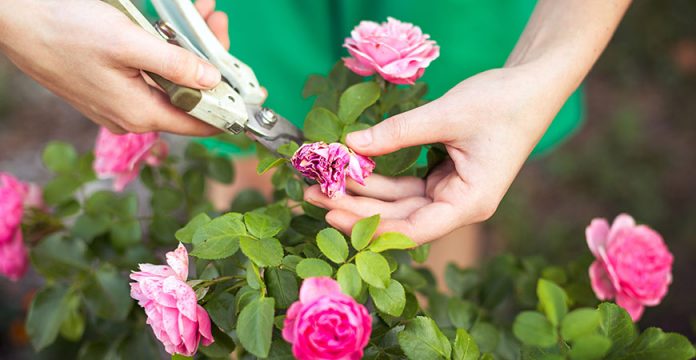On dead roses, the discolored flowers are removed to transfer the plant’s energy and separate from the production of rose hips to create more flowers. Dead roses will make them look great throughout the season. Deadhead roses A damp, slimy mess can cause yeast infections, which can lead to the death of the stems.
Pruning is the process of removing dead buds or finishing buds from plants to stimulate fresh buds and new growth to keep the plants looking fresh. For roses, it is arguably one of the most iconic flowers and most beautiful garden plants. The flowers must wither regularly so that the lush flowers look fresh and attractive throughout the blooming period.
Many roses need seeds to bloom without looking dirty.

Why do you need Deadhead Roses?
In addition to the obvious things that make your rose better, Deadwood offers many benefits for gardeners. Basically, the dead-end keeps the show going: when the flowers begin to wither, the plant’s energy is directed to produce seeds. Gardeners can cleverly intervene in the bushes for a short time and frequently to prolong the flowering period. You can easily avoid this problem.
Tools
There are not many high-tech types of equipment you need to idle. All you need is some simple tools that can be bought cheaply. These are:
Cutters deadhead roses
Of course, what do you want to cut! Good pruning shears are useful to you, but you can also buy pruning shears to help you catch falling flowers after death.
Gloves use for gardening
Ground pruning requires frequent and personal contact with your roses to trim where you want and remove the parts you need. A good pair of gardening gloves is essential to avoid stab wounds.
A Bucket
Medium to large buckets is beneficial for picking cut flowers. The collected flowers are best not to fall on the ground or contact leaves or other plants, as this will cause decay. A bucket, because the flowers are usually big. This is what you need! Of course, there are other products you can invest in if you want (the rose-cut protective sleeve for protecting your forearms is very popular), but these three items should be enough to get you started.
Deadhead Roses
In the world of rose trimming, there are two methods to choose from, depending on what you want to remove. You may use these two methods at different times during the same flowering period. And possibly at the same time. It all depends on whether you take one or more finished flowers from the bud or where you move the entire bud.
Method 1 (more than one pale bloom)
While caring for your roses, you will often find that individual flowers may wither or whither, even if healthy buds or flowers surround them. Generally speaking, it is a good idea to die as soon as the petals fall. Of course, there is no need to eradicate the spikes! To take out one flower at a time, make sure to protect your skin well with gloves and start cutting where the flowers and stems are. Try to catch the fallen flower and put it in a bucket to bloom the remaining buds and flowers. This is an on-demand method, so pay attention to withered flowers and deadheads as needed!
Method 2 (Removing an entire pale blossoming head)
Throughout the flowering period. Usually after any significant blooms. You will find that the entire flower cluster often shows signs of wilting or discoloration; it is time to remove the exhibits. And trace the stem of the color-changing flower head until it joins the first five-petal leaf; there is a cut. Throw it back in the bucket (a larger bucket will definitely come in handy here). When finished, it is best to trim the disproportionately large stems to a medium height so that the rose bushes have a neat round shape.
Also read: How to caramelize onions.






